
Keywords: resistance

|
Determining the landscape of resistance to gene drives in the malaria mosquitoI. Morianou, Imperial College London, 2022.
Gene drives are engineered selfish genetic elements with the potential to spread throughout entire insect populations for sustainable vector control. Recently, a gene drive was shown to eliminate caged populations of the malaria mosquito by targeting the highly conserved ... Keywords: Cas9, CRISPR, drosophila, gene drive synthetic, multiplex drives, population suppression, resistance |

|
A multiplexed, confinable CRISPR/Cas9 gene drive propagates in caged Aedes aegypti populationsM. A. E. Anderson, E. Gonzalez, M. P. Edgington, J. X. D. Ang, D.-K. Purusothaman, L. Shackleford, K. Nevard, S. A. N. Verkuijl, T. Harvey-Samuel, P. T. Leftwich, K. Esvelt and L. Alphey, bioRxiv, 2022.08.12.503466. 2022.
Here, we test the regulatory sequences from the Ae. aegypti benign gonial cell neoplasm (bgcn) homolog to express Cas9 in the germline to find an expression timing more conducive to homing. We also created a separate multiplexing (targeting multiple different sites within the ... Keywords: Cas9, CRISPR, drosophila, gene drive synthetic, multiplex drives, population suppression, resistance |
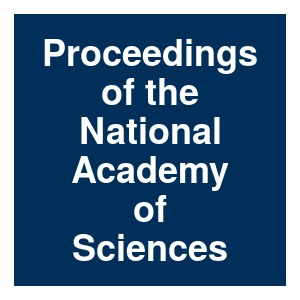
|
A theory of resistance to multiplexed gene drive demonstrates the significant role of weakly deleterious natural genetic variationB. S. Khatri and A. Burt, Proceedings of the National Academy of Sciences, 119:e2200567119. 2022.
CRISPR-based gene drives have the potential for controlling natural populations of disease vectors, such as malaria-carrying mosquitoes in sub-Saharan Africa. If successful, they hold promise of significantly reducing the burden of disease and death from malaria and many other ... Keywords: Cas9, CRISPR, drosophila, gene drive synthetic, multiplex drives, population suppression, resistance |

|
Mendel’s First Law: partisan interests and the parliament of genesC. Veller, Heredity, 2022.
Mendel’s First Law requires explanation because of the possibility of ‘meiotic drivers’, genes that distort fair segregation for selfish gain. The suppression of drive, and the restoration of fair segregation, is often attributed to genes at loci unlinked to the drive ... Keywords: Cas9, CRISPR, drosophila, gene drive synthetic, multiplex drives, population suppression, resistance |

|
Double-tap gene drive uses iterative genome targeting to help overcome resistance allelesA. L. Bishop, V. López Del Amo, E. M. Okamoto, Z. Bodai, A. C. Komor and V. M. Gantz, Nat Commun, 13:2595. 2022.
Homing CRISPR gene drives could aid in curbing the spread of vector-borne diseases and controlling crop pest and invasive species populations due to an inheritance rate that surpasses Mendelian laws. However, this technology suffers from resistance alleles formed when the ... Keywords: Cas9, CRISPR, drosophila, gene drive synthetic, multiplex drives, population suppression, resistance |

|
Gene drive escape from resistance depends on mechanism and ecologyF. Cook, J. J. Bull and R. Gomulkiewicz, Evolutionary Applications, 2022.
Abstract Gene drives can potentially be used to suppress pest populations, and the advent of CRISPR technology has made it feasible to engineer them in many species, especially insects. What remains largely unknown for implementations is whether antidrive resistance will evolve ... Keywords: Cas9, CRISPR, drosophila, gene drive synthetic, multiplex drives, population suppression, resistance |

|
The sterile insect technique is protected from evolution of mate discriminationJ. J. Bull and R. Gomulkiewicz, PeerJ, 10:e13301. 2022.
Background The sterile insect technique (SIT) has been used to suppress and even extinguish pest insect populations. The method involves releasing artificially reared insects (usually males) that, when mating with wild individuals, sterilize the broods. If administered on a large ... Keywords: Cas9, CRISPR, drosophila, gene drive synthetic, multiplex drives, population suppression, resistance |
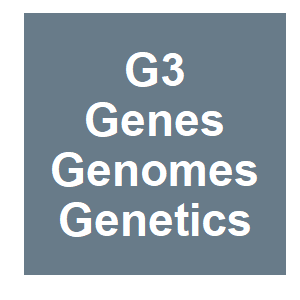
|
A homing suppression gene drive with multiplexed gRNAs maintains high drive conversion efficiency and avoids functional resistance allelesE. Yang, M. Metzloff, A. M. Langmuller, X. J. Xu, A. G. Clark, P. W. Messer and J. Champer, G3-Genes Genomes Genetics, 13. 2022.
Gene drives are engineered alleles that can bias inheritance in their favor, allowing them to spread throughout a population. They could potentially be used to modify or suppress pest populations, such as mosquitoes that spread diseases. CRISPR/Cas9 homing drives, which copy ... Keywords: Cas9, CRISPR, drosophila, gene drive synthetic, multiplex drives, population suppression, resistance |
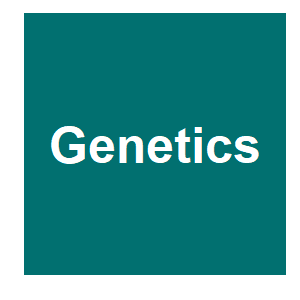
|
Cas9-mediated maternal-effect and derived resistance alleles in a gene-drive strain of the African malaria vector mosquito, Anopheles gambiaeR. Carballar-Lejarazú, T. Tushar, T. B. Pham and A. A. James, Genetics, 2022.
CRISPR/Cas9 technologies are important tools for the development of gene-drive systems to modify mosquito vector populations to control the transmission of pathogens that cause diseases such as malaria. However, one of the challenges for current Cas9-based drive systems is their ... Keywords: Cas9, CRISPR, drosophila, gene drive synthetic, multiplex drives, population suppression, resistance |

|
A homing suppression gene drive with multiplexed gRNAs maintains high drive conversion efficiency and avoids functional resistance allelesE. Yang, M. Metzloff, A. M. Langmüller, X. Xu, A. G. Clark, P. W. Messer and J. Champer, bioRxiv, 2021.05.27.446071. 2022.
Gene drives are engineered alleles that can bias inheritance in their favor, allowing them to spread throughout a population. They could potentially be used to modify or suppress pest populations, such as mosquitoes that spread diseases. CRISPR/Cas9 homing drives, which copy ... Keywords: Cas9, CRISPR, drosophila, gene drive synthetic, multiplex drives, population suppression, resistance |

|
Rescue by gene swamping as a gene drive deployment strategyK. D. Harris and G. Greenbaum, bioRxiv, 2022.03.08.483503. 2022.
Gene drives are genetic constructs that can spread deleterious alleles with potential application to population suppression of harmful species. Given that a gene drive can potentially spill over to other populations or even other species, control measures and fail-safes ... Keywords: Cas9, CRISPR, drosophila, gene drive synthetic, multiplex drives, population suppression, resistance |

|
Hoisted with his own petard: how sex-ratio meiotic drive in Drosophila affnis creates resistance alleles that limit its spreadW.-J. Ma, K. B. Patch, E. M. Knoles, M. M. Shoaib and R. L. Unckless, bioRxiv, 2022.02.14.480432. 2022.
Meiotic drivers are selfish genetic elements that tinker with gameto-genesis to bias their own transmission into the next generation of off-spring. Such tinkering can have significant consequences on gameto-genesis and end up hampering the spread of the driver. In Drosophila ... Keywords: Cas9, CRISPR, drosophila, gene drive synthetic, multiplex drives, population suppression, resistance |

|
Weakly deleterious natural genetic variation amplifies probability of resistance in multiplexed gene drive systemsB. S. Khatri and A. Burt, bioRxiv, 2021.12.23.473701. 2021.
Evolution of resistance is a major barrier to successful deployment of gene drive systems to suppress natural populations. Multiplexed guide RNAs that require resistance mutations in all target cut sites is a promising strategy to overcome resistance. Using novel stochastic ... Keywords: Cas9, CRISPR, drosophila, gene drive synthetic, multiplex drives, population suppression, resistance |

|
Genomic insertion locus and Cas9 expression in the germline affect CRISPR/Cas9-based gene drive performance in the yellow fever mosquito Aedes aegyptiW. R. Reid, J. Lin, A. E. Williams, R. Juncu, K. E. Olson and A. W. E. Franz, bioRxiv, 2021.12.08.471839. 2021.
The yellow fever mosquito Aedes aegypti is a major vector of arthropod-borne viruses, including dengue, chikungunya, and Zika. A novel approach to mitigate arboviral infections is to generate mosquitoes refractory to infection by overexpressing antiviral effector molecules. Such ... Keywords: Cas9, CRISPR, drosophila, gene drive synthetic, multiplex drives, population suppression, resistance |

|
Resistance to a CRISPR-based gene drive at an evolutionarily conserved site is revealed by mimicking genotype fixationS. Fuchs, W. T. Garrood, A. Beber, A. Hammond, R. Galizi, M. Gribble, G. Morselli, T.-Y. J. Hui, K. Willis, N. Kranjc, A. Burt, A. Crisanti and T. Nolan, PLOS Genetics, 17. 2021.
Author summary Gene drives have the potential to be applied as a novel control strategy of disease-transmitting mosquitoes, by spreading genetic traits that suppress or modify the target population. Many gene drive elements work by recognising and cutting a specific target ... Keywords: Cas9, CRISPR, drosophila, gene drive synthetic, multiplex drives, population suppression, resistance |

|
Gene drive escape from resistance depends on mechanism and ecologyF. Cook, J. J. Bull and R. Gomulkiewicz, bioRxiv, 2021.08.30.458221. 2021.
Gene drives can potentially be used to suppress pest populations, and the advent of CRISPR technology has made it feasible to engineer them in many species, especially insects. What remains largely unknown for implementations is whether anti-drive resistance will evolve to block ... Keywords: Cas9, CRISPR, drosophila, gene drive synthetic, multiplex drives, population suppression, resistance |

|
Gene drive strategies of pest control in agricultural systems: challenges and opportunitiesM. Legros, J. M. Marshall, S. Macfadyen, K. R. Hayes, A. Sheppard and L. G. Barrett, Evolutionary Applications, 2021.
Abstract Recent advances in gene editing technologies have opened new avenues for genetic pest control strategies, in particular around the use of gene drives to suppress or modify pest populations. Significant uncertainty, however, surrounds the applicability of these strategies ... Keywords: Cas9, CRISPR, drosophila, gene drive synthetic, multiplex drives, population suppression, resistance |

|
Resistance to a CRISPR-based gene drive at an evolutionarily conserved site is revealed by mimicking genotype fixationS. Fuchs, W. Garrood, A. Beber, A. Hammond, R. Galizi, M. Gribble, G. Morselli, T.-Y. Hui, K. Willis, N. Kranjc, A. Burt, T. Nolan and A. Crisanti, bioRxiv, 2021.
CRISPR-based homing gene drives can be designed to disrupt essential genes whilst biasing their own inheritance, leading to suppression of mosquito populations in the laboratory. This class of gene drives relies on CRISPR-Cas9 cleavage of a target sequence and copying ... Keywords: Cas9, CRISPR, drosophila, gene drive synthetic, multiplex drives, population suppression, resistance |

|
A homing suppression gene drive with multiplexed gRNAs maintains high drive conversion efficiency and avoids functional resistance allelesE. Yang, M. Metzloff, A. M. Langmüller, A. G. Clark, P. W. Messer and J. Champer, bioRxiv, 2021.05.27.446071. 2021.
Gene drives are engineered alleles that can bias inheritance in their favor, allowing them to spread throughout a population. They could potentially be used to modify or suppress pest populations, such as mosquitoes that spread diseases. CRISPR/Cas9 homing drives, which copy ... Keywords: Cas9, CRISPR, drosophila, gene drive synthetic, multiplex drives, population suppression, resistance |

|
Ultra-conserved sequences in the genomes of highly diverse Anopheles mosquitoes, with implications for malaria vector controlS. M. O'Loughlin, A. J. Forster, S. Fuchs, T. Dottorini, T. Nolan, A. Crisanti and A. Burt, G3-Genes Genomes Genetics, 2021.
Here we search for conserved sequences of 18bp and over in an alignment of 21 Anopheles genomes, spanning an evolutionary timescale of 100 million years, and characterise the resulting sequences according to their location and function. Over 8000 ultra-conserved elements were ... Keywords: Cas9, CRISPR, drosophila, gene drive synthetic, multiplex drives, population suppression, resistance |

|
Gene-Editing Approach To Control the Invasive Gray SquirrelM. Campbell, Technology Networks, 2021.
Biodiversity refers to the extent of the variety of life that is found on planet Earth – and it is currently under threat. Changes in biodiversity have been flagged as "surpassing safe limits" for several years, and world leaders and scientists across the globe are consequently ... Keywords: Cas9, CRISPR, drosophila, gene drive synthetic, multiplex drives, population suppression, resistance |

|
A confinable home and rescue gene drive for population modificationN. P. Kandul, J. Liu, J. B. Bennett, J. M. Marshall and O. S. Akbari, eLife, 10:e65939. 2021.
Homing based gene drives, engineered using CRISPR/Cas9, have been proposed to spread desirable genes throughout populations. However, invasion of such drives can be hindered by the accumulation of resistant alleles. To limit this obstacle, we engineer a confinable population ... Keywords: Cas9, CRISPR, drosophila, gene drive synthetic, multiplex drives, population suppression, resistance |

|
Ecology: Gene drives may help control invasive grey squirrel in the UKA. Korn, EurekaAlert, 2021.
Gene drives introduce genes into a population that have been changed to induce infertility in females, allowing for the control of population size. However, they face technical challenges, such as controlling the spread of altered genes as gene drive individuals mate with wild ... Keywords: Cas9, CRISPR, drosophila, gene drive synthetic, multiplex drives, population suppression, resistance |

|
Genetically modified squirrels could curb growing population of greysS. Knapton, Telegraph, 2021.
Mutant grey squirrels, genetically modified to spread infertility genes, could be released into the wild to tackle the burgeoning population, Keywords: Cas9, CRISPR, drosophila, gene drive synthetic, multiplex drives, population suppression, resistance |

|
Expert reaction to a paper suggesting that gene drives could be used to help control grey squirrel numbers in the UKAnonymous, Science Media Centre, 2021.
This study assesses the prospects for using a gene drive to control invasive grey squirrels in the UK. This is a modelling study exploring the potential for such an approach – no such gene drives currently exist and developing them for grey squirrels would be quite a long-term ... Keywords: Cas9, CRISPR, drosophila, gene drive synthetic, multiplex drives, population suppression, resistance |

|
CRISPR gene drives may come to a squirrel near you.Anonymous, NewsBeezer, 2021.
Today’s gene drive technologies could be blended to provide control of the invasive gray squirrel population in the UK – with minimal risk to other populations, according to a new modeling published in the journal Scientific reports. Gene driving introduces altered genes ... Keywords: Cas9, CRISPR, drosophila, gene drive synthetic, multiplex drives, population suppression, resistance |
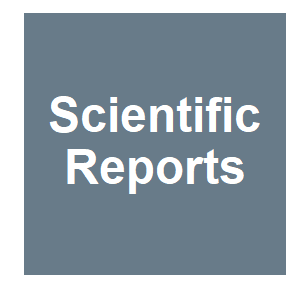
|
Novel combination of CRISPR-based gene drives eliminates resistance and localises spreadN. R. Faber, G. R. McFarlane, R. C. Gaynor, I. Pocrnic, C. B. A. Whitelaw and G. Gorjanc, Scientific Reports, 11:3719. 2021.
As a case study, we model HD-ClvR in the grey squirrel (Sciurus carolinensis), which is an invasive pest in the UK and responsible for both biodiversity and economic losses. HD-ClvR combats resistance allele formation by combining a homing gene drive with a cleave-and-rescue gene ... Keywords: Cas9, CRISPR, drosophila, gene drive synthetic, multiplex drives, population suppression, resistance |

|
Regulating the expression of gene drives is key to increasing their invasive potential and the mitigation of resistanceA. Hammond, X. Karlsson, I. Morianou, K. Kyrou, A. Beaghton, M. Gribble, N. Kranjc, R. Galizi, A. Burt, A. Crisanti and T. Nolan, PLOS Genetics, 17:e1009321. 2021.
Here we show that restricting the cutting activity of the gene drive to the germline tissue is crucial to maintaining its potency and we illustrate how failure to restrict this activity can lead to the generation of mutations that can make mosquitoes resistant to the gene drive. Keywords: Cas9, CRISPR, drosophila, gene drive synthetic, multiplex drives, population suppression, resistance |

|
Into the Wild: GMOs head for the forestL. Sharratt, Sentinel, 2021.
Genetic engineering is set to leave the farm for the forest. After over twenty years of growing genetically engineered (GE or genetically modified) crop plants in North America, researchers are now proposing to plant GE trees in the forests of eastern US and Canada. This is a ... Keywords: Cas9, CRISPR, drosophila, gene drive synthetic, multiplex drives, population suppression, resistance |

|
Targeting evolutionary conserved sequences circumvents the evolution of resistance in a viral gene drive against human cytomegalovirusM. Walter, R. Perrone and E. Verdin, bioRxiv, 2021.01.08.425902. 2021.
Here, we analyze in cell culture experiments the evolution of resistance in a gene drive against human cytomegalovirus. We report that after an initial invasion of the wildtype population, a drive-resistant population is positively selected over time and outcompetes gene drive ... Keywords: Cas9, CRISPR, drosophila, gene drive synthetic, multiplex drives, population suppression, resistance |

|
Control of malaria-transmitting mosquitoes using gene drivesT. Nolan, Philosophical Transactions of the Royal Society B: Biological Sciences, 376:20190803. 2020.
In this article, I will discuss the relative merits of this type of gene drive, as well as barriers to its technical development and to its deployment in the field as malaria control. This article is part of the theme issue ‘Novel control strategies for mosquito-borne ... Keywords: Cas9, CRISPR, drosophila, gene drive synthetic, multiplex drives, population suppression, resistance |

|
Evading resistance to gene drivesR. Gomulkiewicz, M. L. Thies and J. J. Bull, bioRxiv, 2020.08.27.270611. 2020.
Our analyses suggest that among gene drives that cause moderate suppression, toxin-antidote systems are less apt to select for resistance than homing drives. Single drives of moderate effect might cause only moderate population suppression, but multiple drives (perhaps delivered ... Keywords: Cas9, CRISPR, drosophila, gene drive synthetic, multiplex drives, population suppression, resistance |

|
Reply to: “Enhancement of Aedes aegypti susceptibility to dengue by Wolbachia is not supported”C. Souto-Maior, J. G. King, L. M. Sartori, R. Maciel-de-Freitas and M. G. M. Gomes, Nature Communications, 11:6113. 2020.
Ant et al.4 claim that concerns with the data and broader analysis make our conclusions misleading. We herein respond to their comments by demonstrating the robustness of our results to different treatments of the data, and expand our arguments for replacing currently adopted ... Keywords: Cas9, CRISPR, drosophila, gene drive synthetic, multiplex drives, population suppression, resistance |

|
Enhancement of Aedes aegypti susceptibility to dengue by Wolbachia is not supportedT. H. Ant, M.-V. Mancini, J. Martinez and S. P. Sinkins, Nature Communications, 11:6111. 2020.
King et al.3 used DENV infection and transmission modelling to reinterpret experimental data from two previous studies4,5. The authors claimed that wMel Wolbachia increase the mean susceptibility of Ae. aegypti to DENV, contradicting various other studies6,7,8,9,10,11,12. Here, ... Keywords: Cas9, CRISPR, drosophila, gene drive synthetic, multiplex drives, population suppression, resistance |

|
Split drive killer-rescue provides a novel threshold-dependent gene driveM. P. Edgington, T. Harvey-Samuel and L. Alphey, Scientific Reports, 10:13. 2020.
We show that although end-joining repair mechanisms may cause the system to break down, under certain conditions, it should persist over time scales relevant for genetic control programs. The potential of such a system to provide localised population suppression via sex ratio ... Keywords: Cas9, CRISPR, drosophila, gene drive synthetic, multiplex drives, population suppression, resistance |

|
Evading evolution of resistance to gene drivesR. Gomulkiewicz, M. L. Thies and J. J. Bull, bioRxiv, 2020.08.27.270611. 2020.
Our analyses suggest that among gene drives that cause moderate suppression, toxin-antidote systems are less apt to select for resistance than homing drives. Single drives of this type would achieve only partial population suppression, but multiple drives (perhaps delivered ... Keywords: Cas9, CRISPR, drosophila, gene drive synthetic, multiplex drives, population suppression, resistance |

|
Modeling CRISPR gene drives for suppression of invasive rodentsS. E. Champer, N. Oakes, R. Sharma, P. García-Díaz, J. Champer and P. W. Messer, bioRxiv, 2020.11.05.369942. 2020.
Here, we develop a high-fidelity model of an island population of invasive rodents that includes three types of suppression gene drive systems. The individual-based model is spatially explicit and allows for overlapping generations and a fluctuating population size. Our model ... Keywords: Cas9, CRISPR, drosophila, gene drive synthetic, multiplex drives, population suppression, resistance |
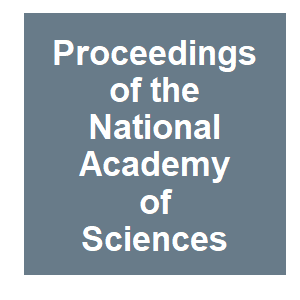
|
A CRISPR homing gene drive targeting a haplolethal gene removes resistance alleles and successfully spreads through a cage populationJ. Champer, E. Yang, E. Lee, J. Liu, A. G. Clark and P. W. Messer, Proceedings of the National Academy of Sciences, 202004373. 2020.
Here, we present a CRISPR homing drive that was able to successfully spread to all individuals in a laboratory cage study in Drosophila melanogaster without any apparent evolution of resistance. Keywords: Cas9, CRISPR, drosophila, gene drive synthetic, multiplex drives, population suppression, resistance |

|
Suppressing evolution in genetically engineered systems through repeated supplementationN. C. Layman, B. M. Tuschhoff, A. J. Basinski, C. H. Remien, J. J. Bull and S. L. Nuismer, Evolutionary Applications, 12. 2020.
Genetically engineered organisms are prone to evolve in response to the engineering. This evolution is often undesirable and can negatively affect the purpose of the engineering. Methods that maintain the stability of engineered genomes are therefore critical to the successful ... Keywords: Cas9, CRISPR, drosophila, gene drive synthetic, multiplex drives, population suppression, resistance |

|
Inherently confinable split-drive systems in DrosophilaG. Terradas, A. B. Buchman, J. B. Bennett, I. Shriner, J. M. Marshall, O. S. Akbari and E. Bier, bioRxiv, 2020.09.03.282079. 2020.
Here, we test split gene-drive (sGD) systems in Drosophila melanogaster that were inserted into essential genes required for viability (rab5, rab11, prosalpha2) or fertility (spo11). I Keywords: Cas9, CRISPR, drosophila, gene drive synthetic, multiplex drives, population suppression, resistance |

|
Evading evolution of resistance to gene drivesR. Gomulkiewicz, M. L. Thies and J. J. Bull, bioRxiv, 2020.
Here we develop mathematical and computational models to identify conditions under which suppression drives will evade resistance, even if resistance is present initially. Keywords: Cas9, CRISPR, drosophila, gene drive synthetic, multiplex drives, population suppression, resistance |

|
Novel combination of CRISPR-based gene drives eliminates resistance and localises spreadN. R. Faber, G. R. McFarlane, R. C. Gaynor, I. Pocrnic, C. B. A. Whitelaw and G. Gorjanc, bioRxiv, 2020.
We present HD-ClvR, a novel combination of CRISPR-based gene drives that eliminates resistance and localises spread. As a case study, we model HD-ClvR in the grey squirrel (Sciurus carolinensis), which is an invasive pest in the UK and responsible for both biodiversity and ... Keywords: Cas9, CRISPR, drosophila, gene drive synthetic, multiplex drives, population suppression, resistance |

|
Next-generation gene drive for population modification of the malaria vector mosquito, Anopheles gambiaeR. Carballar-Lejarazú, C. Ogaugwu, T. Tushar, A. Kelsey, T. B. Pham, J. Murphy, H. Schmidt, Y. Lee, G. C. Lanzaro and A. A. James, Proceedings of the National Academy of Sciences, 202010214. 2020.
We show here that the Cas9/guide RNA-based gene-drive components of a genetically-engineered malaria mosquito vector, Anopheles gambiae, achieve key target product profile requirements for efficacy and performance. Keywords: Cas9, CRISPR, drosophila, gene drive synthetic, multiplex drives, population suppression, resistance |

|
A home and rescue gene drive forces its inheritance stably persisting in populationsN. P. Kandul, J. Liu, J. B. Bennett, J. M. Marshall and O. Akbari, bioRxiv, 2020.08.21.261610. 2020.
We demonstrate that HomeR can achieve nearly ~100% transmission enabling it to persist at genotypic fixation in several multi-generational population cage experiments, underscoring its long term stability. Keywords: Cas9, CRISPR, drosophila, gene drive synthetic, multiplex drives, population suppression, resistance |
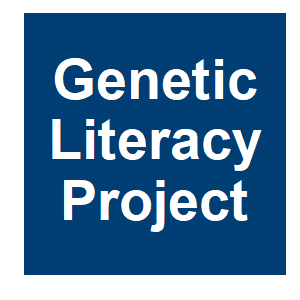
|
CRISPR gene drives could eliminate many vector-driven pests and diseases, but challenges remainJ. Champer, Genetic Literacy Project, 2020.
A functioning gene drive system could fundamentally change our strategies for the control of vector-borne diseases by facilitating rapid dissemination of transgenes that prevent pathogen transmission or reduce vector capacity. CRISPR/Cas9 gene drive promises such a mechanism, ... Keywords: Cas9, CRISPR, drosophila, gene drive synthetic, multiplex drives, population suppression, resistance |

|
2-Locus Cleave and Rescue; selfish elements harness a recombination rate-dependent generational clock for self limiting gene driveG. Oberhofer, T. Ivy and B. A. Hay, bioRxiv, 2020.
Self-limiting gene drive allows control over the spread and fate of linked traits. Cleave and Rescue (ClvR) elements create self-sustaining drive and comprise a DNA sequence-modifying enzyme (Cas9-gRNAs, Cleaver) that disrupts an essential gene, and a tightly linked, uncleavable ... Keywords: Cas9, CRISPR, drosophila, gene drive synthetic, multiplex drives, population suppression, resistance |

|
Artificial Selection Finds New Hypotheses for the Mechanism of Wolbachia-Mediated Dengue Blocking in MosquitoesS. A. Ford, I. Albert, S. L. Allen, S. F. Chenoweth, M. Jones, C. Koh, A. Sebastian, L. T. Sigle and E. A. McGraw, Frontiers in Microbiology, 11:1456. 2020.
We recently used experimental evolution to reveal that Wolbachia-mediated dengue blocking could be selected upon in the A. aegypti host and showed evidence that strong levels of blocking could be maintained by natural selection. In this study, we investigate the genetic variation ... Keywords: Cas9, CRISPR, drosophila, gene drive synthetic, multiplex drives, population suppression, resistance |

|
Genetic breakdown of a Tet-off conditional lethality system for insect population controlY. Zhao, M. F. Schetelig and A. M. Handler, Nature Communications, 11:3095. 2020.
Genetically modified conditional lethal strains have been created to improve the control of insect pest populations damaging to human health and agriculture. However, understanding the potential for the genetic breakdown of lethality systems by rare spontaneous mutations, or ... Keywords: Cas9, CRISPR, drosophila, gene drive synthetic, multiplex drives, population suppression, resistance |

|
Selfish genes and sexual selection: the impact of genomic parasites on host reproductionN. Wedell, Journal of Zoology, 311:1-12. 2020.Selfish genetic elements (SGEs) such as replicating mobile elements, segregation distorters and maternally inherited endosymbionts, bias their transmission success relative to the rest of the genome to increase in representation in subsequent generations. As such, they generate ... Keywords: Cas9, CRISPR, drosophila, gene drive synthetic, multiplex drives, population suppression, resistance |

|
Computational and experimental performance of CRISPR homing gene drive strategies with multiplexed gRNAsS. E. Champer, S. Y. Oh, C. Liu, Z. Wen, A. G. Clark, P. W. Messer and J. Champer, Science Advances, 6:eaaz0525. 2020.
The rapid evolution of resistance alleles poses a major obstacle for genetic manipulation of populations with CRISPR homing gene drives. One proposed solution is using multiple guide RNAs (gRNAs), allowing a drive to function even if some resistant target sites are present. Here, ... Keywords: Cas9, CRISPR, drosophila, gene drive synthetic, multiplex drives, population suppression, resistance |

|
Abundance of conserved CRISPR-Cas9 target sites within the highly polymorphic genomes of Anopheles and Aedes mosquitoesH. Schmidt, T. C. Collier, M. J. Hanemaaijer, P. D. Houston, Y. Lee and G. C. Lanzaro, Nature Communications, 11. 2020.
ere we report the results of a survey of 1280 genomes of the mosquitoes Anopheles gambiae, An. coluzzii, and Aedes aegypti in which we determine that similar to 90% of all protein-encoding CGD target genes in natural populations include at least one target site with no DRAs at a ... Keywords: Cas9, CRISPR, drosophila, gene drive synthetic, multiplex drives, population suppression, resistance |
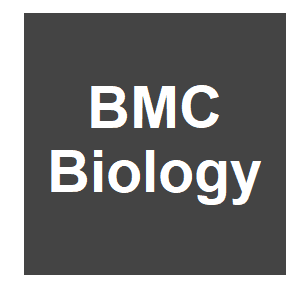
|
Performance analysis of novel toxin-antidote CRISPR gene drive systemsJ. Champer, I. K. Kim, S. E. Champer, A. G. Clark and P. W. Messer, BMC Biology, 18:27. 2020.
CRISPR gene drive systems allow the rapid spread of a genetic construct throughout a population. Such systems promise novel strategies for the management of vector-borne diseases and invasive species by suppressing a target population or modifying it with a desired trait. ... Keywords: Cas9, CRISPR, drosophila, gene drive synthetic, multiplex drives, population suppression, resistance |

|
Genetic Variation and Potential for Resistance Development to the tTA Overexpression Lethal System in InsectsK. E. Knudsen, W. R. Reid, T. M. Barbour, L. M. Bowes, J. Duncan, E. Philpott, S. Potter and M. J. Scott, G3: Genes|Genomes|Genetics, Early Online:g3.400990.2020. 2020.
Release of insect pests carrying the dominant lethal tetracycline transactivator (tTA) overexpression system has been proposed as a means for population suppression. High levels of the tTA transcription factor are thought to be toxic due to either transcriptional squelching or ... Keywords: Cas9, CRISPR, drosophila, gene drive synthetic, multiplex drives, population suppression, resistance |
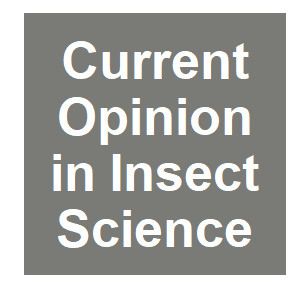
|
Gene technologies in weed management: a technical feasibility analysisN. Kumaran, A. Choudhary, M. Legros, A. W. Sheppard, L. G. Barrett, D. M. Gardiner and S. Raghu, Current Opinion in Insect Science, 38:6-14. 2020.
With the advent of new genetic technologies such as gene silencing and gene drive, efforts to develop additional management tools for weed management is gaining significant momentum. These technologies promise novel ways to develop sustainable weed control options because gene ... Keywords: Cas9, CRISPR, drosophila, gene drive synthetic, multiplex drives, population suppression, resistance |

|
An introgressed gene causes meiotic drive in Neurospora sitophilaJ. Svedberg, A. A. Vogan, N. A. Rhoades, D. Sarmarajeewa, D. J. Jacobson, M. Lascoux, T. M. Hammond and H. Johannesson, bioRxiv, 2020.01.29.923946. 2020.
In this study, we identify the gene responsible for spore killing in Sk-1 by generating both long and short-read genomic data and by using these data to perform a genome wide association test. By phylogenetic analysis, we demonstrate that the gene is likely to have been ... Keywords: Cas9, CRISPR, drosophila, gene drive synthetic, multiplex drives, population suppression, resistance |

|
Transcontinental dispersal of Anopheles gambiae occurred from West African origin via serial founder eventsH. Schmidt, Y. Lee, T. C. Collier, M. J. Hanemaaijer, O. D. Kirstein, A. Ouledi, M. Muleba, D. E. Norris, M. Slatkin, A. J. Cornel and G. C. Lanzaro, Communications Biology, 2. 2019.
Here we present population genomic analyses of 111 specimens sampled from west to east Africa, including the first whole genome sequences from oceanic islands, the Comoros. Keywords: Cas9, CRISPR, drosophila, gene drive synthetic, multiplex drives, population suppression, resistance |

|
Evolutionary simulations of Z-linked suppression gene drivesL. Holman, Proceedings of the Royal Society B-Biological Sciences, 286:1-9. 2019.
Synthetic gene drives may soon be used to suppress or eliminate populations of disease vectors, pathogens, invasive species, and agricultural pests. Recent proposals have focused on using Z-linked gene drives to control species with ZW sex determination, which include ... Keywords: Cas9, CRISPR, drosophila, gene drive synthetic, multiplex drives, population suppression, resistance |

|
CRISPR gene drive efficiency and resistance rate is highly heritable with no common genetic loci of large effectChamper, JW, Z. X.; Luthra, A.; Reeves, R.; Chung, J.; Liu, C.; Lee, Y. L.; Liu, J. X.; Yang, E.; Messer, P. W.; Clark, A. G., Genetics, 212:333-341. 2019.
Gene drives could allow for control of vector-borne diseases by directly suppressing vector populations or spreading genetic payloads designed to reduce pathogen transmission. Clustered regularly interspaced short palindromic repeat (CRISPR) homing gene drives work by cleaving ... Keywords: Cas9, CRISPR, drosophila, gene drive synthetic, multiplex drives, population suppression, resistance |

|
A Multiple Gene Drive SystemFerdinand Nanfack Minkeu, IGTRCN, 2019.
Yan & Finnigan, (2018) recently published a paper in Scientific Reports describing an artificial multi-locus gene drive system by using a single Cas9 and three guide RNA (gRNA) in the budding yeast Saccharomyces cerevisiae. Nuclease-based gene drives do not follow the typical ... Keywords: Cas9, CRISPR, drosophila, gene drive synthetic, multiplex drives, population suppression, resistance |
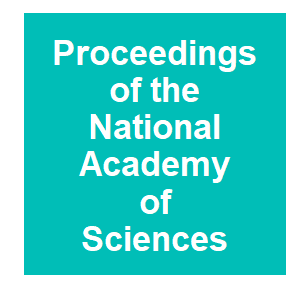
|
Engineered resistance to Zika virus in transgenic Aedes aegypti expressing a polycistronic cluster of synthetic small RNAsBuchman, AG, S.; Li, M.; Antoshechkin, I.; Li, H. H.; Wang, H. W.; Chen, C. H.; Klein, M. J.; Duchemin, J. B.; Paradkar, P. N.; Akbari, O. S., Proceedings of the National Academy of Sciences of the United States of America, 116:3656-3661. 2019.
Recent Zika virus (ZIKV) outbreaks have highlighted the necessity for development of novel vector control strategies to combat arboviral transmission, including genetic versions of the sterile insect technique, artificial infection with Wolbachia to reduce population size and/or ... Keywords: Cas9, CRISPR, drosophila, gene drive synthetic, multiplex drives, population suppression, resistance |

|
Pest demography critically determines the viability of synthetic gene drives for population controlK. E. Wilkins, T. A. A. Prowse, P. Cassey, P. Q. Thomas and J. V. Ross, Mathematical Biosciences, 305:160-169. 2018.
Synthetic gene drives offer a novel solution for the control of invasive alien species. CRISPR-based gene drives can positively bias their own inheritance, and comprise a DNA sequence that is replicated by homologous recombination. Since gene drives can be positioned to silence ... Keywords: Cas9, CRISPR, drosophila, gene drive synthetic, multiplex drives, population suppression, resistance |

|
Lethal Gene Drive Selects InbreedingJ. J. Bull, bioRxiv, 046847. 2016.
ere, population genetic models are used to consider the evolution of inbreeding (specifically selfing) as a possible response to a recessively lethal HEG with complete segregation distortion. Numerical analyses indicate a rich set of outcomes, but selfing often evolves in ... Keywords: Cas9, CRISPR, drosophila, gene drive synthetic, multiplex drives, population suppression, resistance |
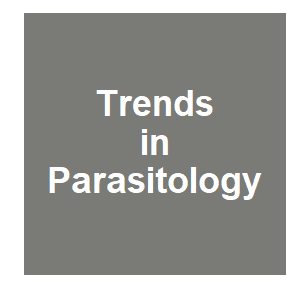
|
Pyrethroid resistance in African anopheline mosquitoes: what are the implications for malaria control?H. Ranson, R. N’Guessan, J. Lines, N. Moiroux, Z. Nkuni and V. Corbel, Trends in Parasitology, 27:91-98. 2011.
The use of pyrethroid insecticides in malaria vector control has increased dramatically in the past decade through the scale up of insecticide treated net distribution programmes and indoor residual spraying campaigns. Inevitably, the major malaria vectors have developed ... Keywords: Cas9, CRISPR, drosophila, gene drive synthetic, multiplex drives, population suppression, resistance |

|
A synthetic maternal-effect selfish genetic element drives population replacement in DrosophilaChen, CHH, H. X.; Ward, C. M.; Su, J. T.; Schaeffer, L. V.; Guo, M.; Hay, B. A., Science, 316:597-600. 2007.
One proposed strategy for controlling the transmission of insect-borne pathogens uses a drive mechanism to ensure the rapid spread of transgenes conferring disease refractoriness throughout wild populations. Here, we report the creation of maternal-effect selfish genetic elements ... Keywords: Cas9, CRISPR, drosophila, gene drive synthetic, multiplex drives, population suppression, resistance |

Contact
David O’Brochta
Foundation for the
National Institutes of Health
geneconvenevi@fnih.org
RSS

